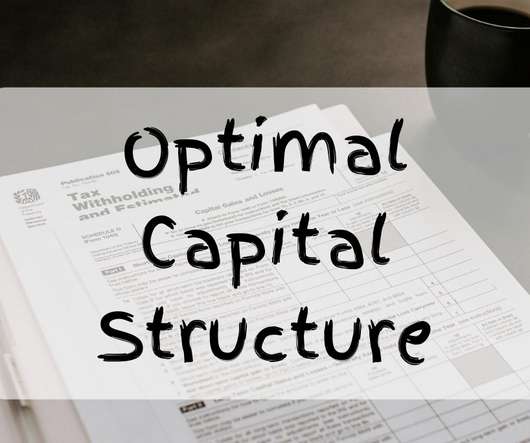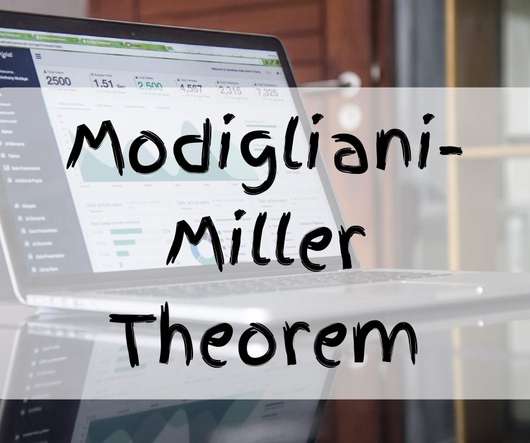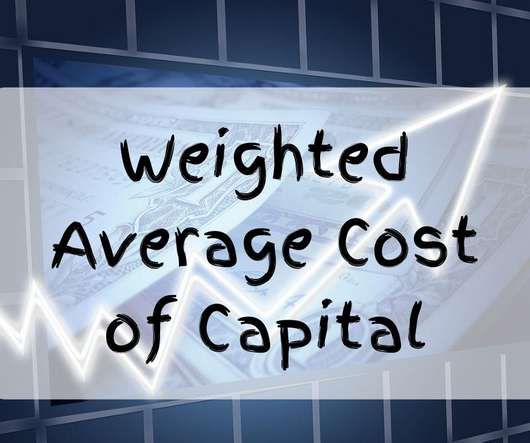Capital Structure in 5 Minutes
Auto Dealer Valuation Insights
DECEMBER 19, 2023
Family businesses are built on long-term capital investments. Capital structure refers to the mix of debt and equity financing used to make those investments.

Auto Dealer Valuation Insights
DECEMBER 19, 2023
Family businesses are built on long-term capital investments. Capital structure refers to the mix of debt and equity financing used to make those investments.

Andrew Stolz
AUGUST 6, 2020
Definition of Optimal Capital Structure. The optimal capital structure of a firm is the right combination of equity and debt financing. It allows the firm to have a minimum cost of capital while having the maximum market value. The lesser the cost of capital, the more the market value of the company.
This site is protected by reCAPTCHA and the Google Privacy Policy and Terms of Service apply.

Equilest
OCTOBER 9, 2024
Understanding your company’s capital structure is essential for maximizing its value and ensuring long-term stability. Whether you're deciding how much debt to take on or how to manage equity financing, the right mix can lower your cost of capital and boost growth. Downsides of relying too much on equity.

Equilest
MARCH 28, 2025
distressed firms) Companies facing bankruptcy Impact on Investors and Stakeholders Risk to shareholders Implications for lenders and creditors How Negative Equity Affects Valuation Impacts on stock price Effect on mergers and acquisitions Can a Business Recover from Negative Equity? How does negative equity affect dividends?

Andrew Stolz
AUGUST 6, 2020
The theory suggests that a company’s capital structure and the average cost of capital does not have an impact on its overall value. . It doesn’t matter whether the company raises capital by borrowing money, issuing new shares, or by reinvesting profits in daily operations. Definition of the Modigliani-Miller Theorem.

Sun Acquisitions
APRIL 26, 2024
On the flip side, if the merger generates synergies and increased profitability, debt financing can yield substantial rewards, as debt is often lower than equity. Equity Financing: Dilution vs. Stability Equity financing involves issuing new shares to raise capital for the M&A transaction.

Andrew Stolz
AUGUST 5, 2020
The WACC is the average cost of raising capital from all sources, including equity, common shares, preferred shares, and debt. What Impacts the Weighted Average Cost of Capital? Formula: [Cost of Equity * % of Equity] + [Cost of Debt * % of Debt *(1 – Tax Rate)] + [Cost of Preferred Stock * % of Preferred Stock].
Let's personalize your content